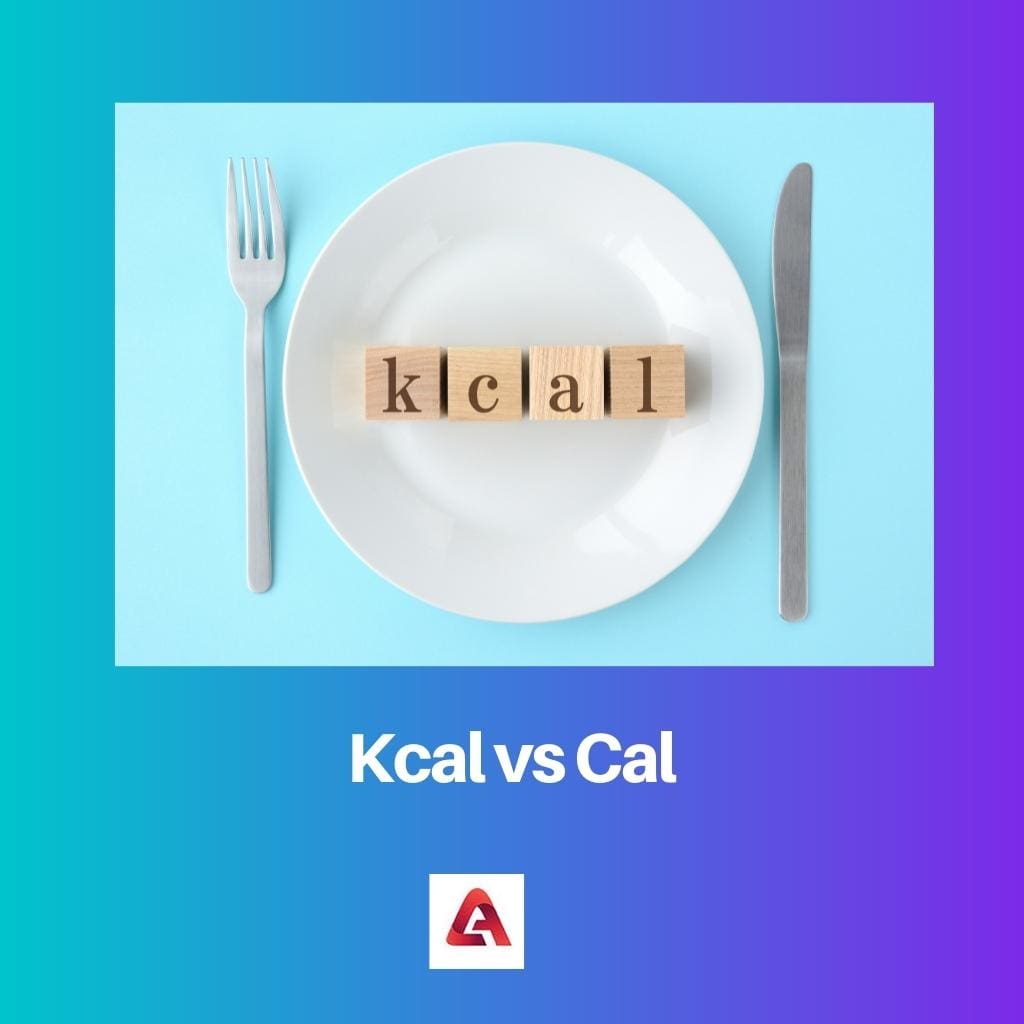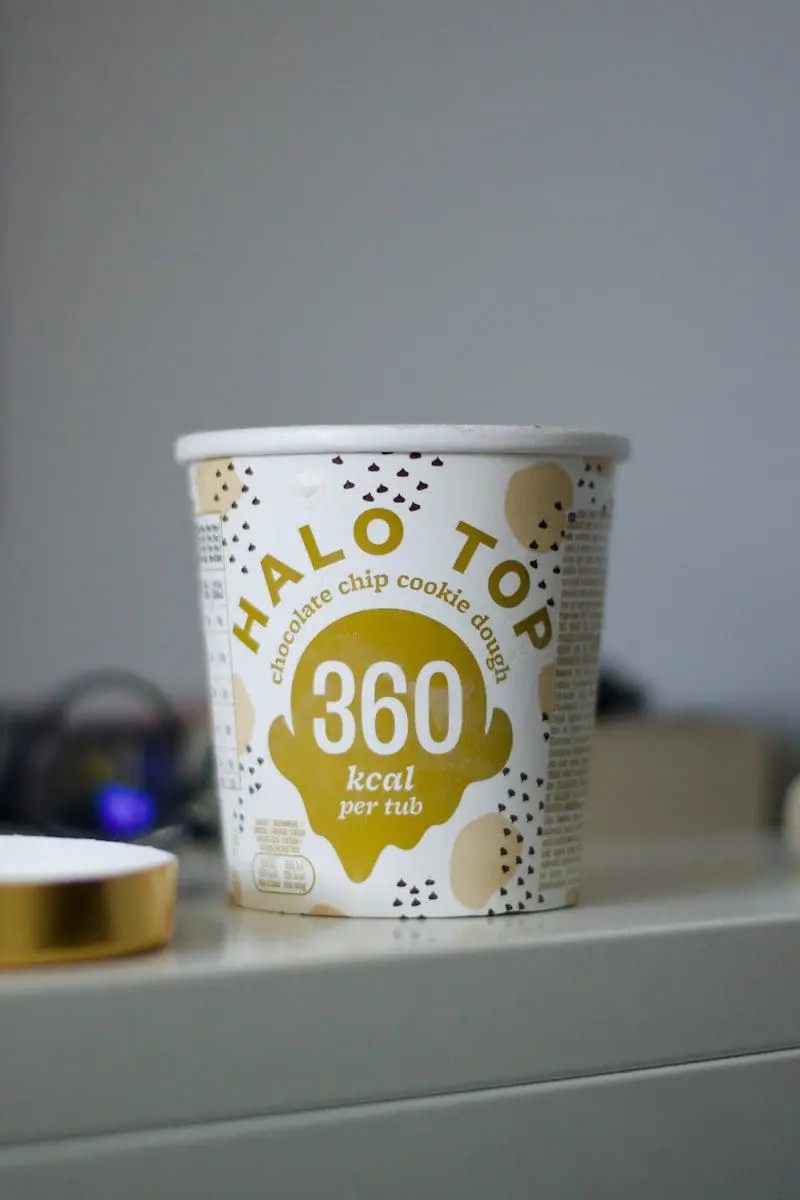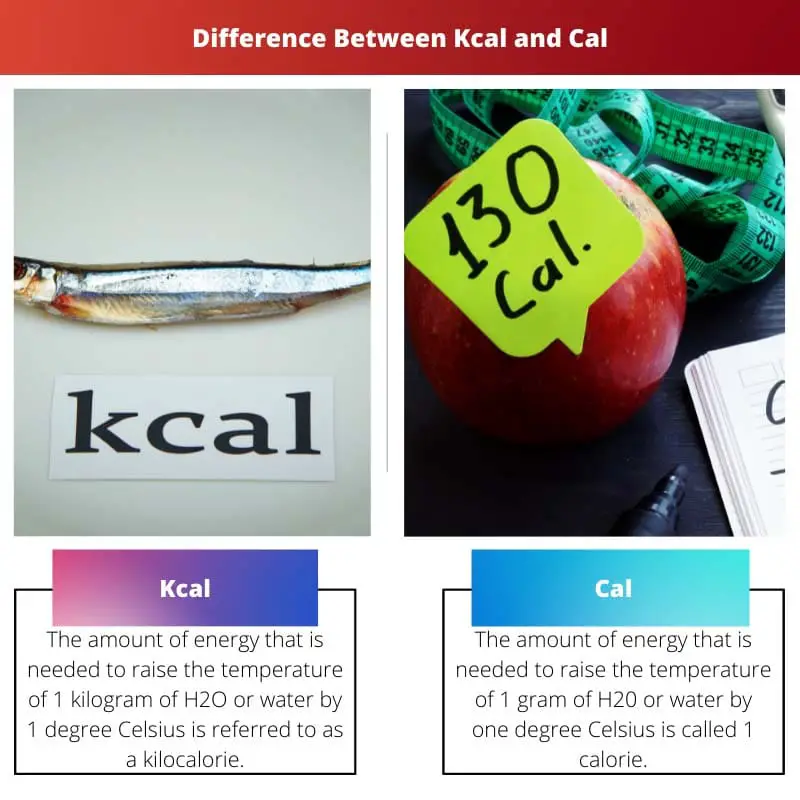Often people go to supermarkets to buy food items and come across two different brands of the same product. They fail when they try to compare the nutritional values of both products. The main reason was that the values given on one packet were in calories and another in kilocalories.
This only happens when you do intra-country migrations. The nutritional labels in the foreign country look different from the country you belong to.
Many people might have faced this situation, and you should not be ashamed to know that you are not alone. As the majority of people can not differentiate between calories and kilocalories. In this article, we will discuss how calories differ from kilocalories.
Key Takeaways
- Cal is a unit of measurement for energy, while kcal is a larger unit of energy equal to 1000 calories.
- Cal is commonly used on food labels to indicate the amount of energy in a serving, while kcal is used in scientific contexts to measure the energy content of substances.
- One kcal is equal to 1,000 cal.
Kcal vs Cal
Kcal refers to the kilocalorie, and cal refers to calories. Kcal is the bigger version of the measurement of energy retained by food items and their nutritional value. Calorie refers to the much smaller version of the same. However, on the labels that are present on the back of any packaged foods, the Calorie value is written, which is equal to a kilocalorie and not a calorie.

One kilocalorie is larger than a calorie by 1000 times. Thus, one thousand calories are equal to one kilocalorie. This system of measurement is used to raise the temperature of 1 kg water by 1°C.
However, the pressure applied should be one atmosphere. A kilocalorie is considered as a dietary or food calorie. However, almost in all cases, it is represented as calories.
In many countries, the use of kcal is done as the calculation of nutritional value and is called a Calorie. KA kilocalories a metric equivalent to 4.184 kilojoules.
One calorie is 1000 times lesser than a kilocalorie. Thus, one thousand calories are equal to one kilocalorie. One calorie is used to raise one gram of water temperature by 1°C. However, the pressure needed is 1 ATM.
The traditional calorie, which is equal to 0.001 kilocalories, does not imply the dietary or food calorie pasted on the food labels. The calorie with a smaller case c is not equal to the typical Calorie with an upper case C. One calorie is the metric equivalent of 4.184 joules.
Comparison Table
| Parameters of Comparison | Kcal | Cal |
|---|---|---|
| Size: kcal vs cal | Kcal or kilocalorie = 1000 calories | 1 calorie = 0.001 kilocalorie |
| The energy at 1 Atm Pressure | Used to raise 1°C of 1kg water. | Used to raise 1°C of 1g water. |
| Food calorie | Representative of food and dietary calorie. | Does not represent food or dietary calorie. |
| Food labels | Kcal is equal to Calorie. | A calorie is not equal yot a calorie. |
| Metric equivalent | 1 kilocalorie = 4.184 kilojoule. | 1 calorie = 4.184 joule. |
What is Kcal?
At one atmospheric pressure, the amount of energy that is needed to raise the temperature of 1 kilogram of H2O or water by 1 degree Celsius is referred to as a kilocalorie. Its use is abundant in the field of chemistry.
For instance, its use indicates the total amount of energy released when one mole of any substance or reagent is reacted. Kilocalories are equivalent to kilojoules according to the metric system. In 1 kilocalorie, there are 4.184 kilojoules or KJ.
The nutritional values of the food items are recorded and then mentioned on the labels on the packet. They symbolise the energy content of that food item. One kilocalorie is equal to one thousand calories.
This means to convert a kilocalorie into a calorie, and you need to multiply the numerical value of the kilocalorie by 1000. For example, 7 kilocalories would be equal to 7000 calories. Generally, on the food labels, the calories mentioned are equal to kilocalories.

What is Cal?
At one atmospheric pressure, the amount of energy that is needed to raise the temperature of 1 gram of H20 or water by one degree Celsius is called 1 calorie.
However, the energy that is needed to increase the temperature of the water is also called the specific heat of H2O or water. Thus, the calorie was used as a way of measurement of energy by heat means. To make one kilocalorie, it needs 1000 calories.
However, one needs to divide by one thousand to determine how many kilocalories it is. For example, 6000 calories would be equivalent to 6 kilocalories.
After 1924, the joule was used more than calories, as the joule is the unit of energy as per the international standard unit. As per the metric system, a calorie is equivalent to a joule in terms of energy.
Thus, 4.184 joules is approximately equal to 1 calorie. More often, J. Calorie is used to measure energy. However, the value of the calories that are mentioned on the food labels refers to kilocalories.

Main Differences Between Kcal and Cal
- One kilocalorie is one thousand times larger than a calorie. However, one calorie is a thousand times lesser than a kilocalorie. Thus, 1000 calories are equal to 1 kilocalorie.
- The kilocalorie is used to raise the temperature of 1 kg of water by 1°C. On the other hand, one calorie is used to raise one gram of water temperature by 1°C, both at one atmospheric pressure.
- The kilocalorie is considered as the dietary or food calorie and is represented as Calorie. However, the traditional calorie does not imply dietary or food calories.
- Some countries use kcal to measure nutritional value, called a Calorie. On the other hand, the calorie is not equal to the typical Calorie(with an upper case C).
- The metric equivalent of kilocalories is 4.184 kilojoules. On the other hand, the metric equivalent of a calorie is 4.184 joules.

- https://www.sciencedirect.com/science/article/pii/S0749379719301953
- https://books.google.com/books?hl=en&lr=&id=rgJRAAAAMAAJ&oi=fnd&pg=PA1&dq=kcal+and+cal&ots=z223ZcOic_&sig=hadPLZUbRgfPo-4yzn2S_WRwYyI

This was very informative. It’s interesting to know that ‘Cal’ refers to kilocalories on food labels, not small calories. I appreciate the clear explanation.
I’ve wondered about this when reading food labels. Thank you for clarifying the difference. Looking forward to learning more about these topics.
This article provides a comprehensive breakdown of kcal and cal that helps in understanding the differences clearly. It’s educational and well-detailed.
The explanations provided in this article are very clear and informative. It’s valuable knowledge that will help me understand food labels accurately. Can’t wait to read more content such as this.
I couldn’t agree more. This is the kind of educational resource that’s highly beneficial for anyone. Looking forward to more in-depth articles on related topics.
Absolutely. This will change the way we read food labels. The information is presented in a clear and understandable manner. Well done!
This article has done a great job explaining the difference between calories and kilocalories. I finally understand how they differ. It’s important to know these differences to make informed decisions about the food we consume.
Understanding the correct use of kcal and cal can help us interpret nutritional labels more accurately. This will be especially useful when comparing different food products. Looking forward to more articles like this.
I completely agree. It’s crucial for making informed choices about our diets. It’s essential to spread this knowledge so more people can benefit.
This article has provided a clear understanding of kcal and cal. I will be referring back to this information when checking food labels from now on.
Likewise, this information will be incredibly useful when making informed decisions about the food we consume. It’s a great educational resource.
The clarity in defining kcal and cal is instrumental in interpreting food labels accurately. It’s fantastic to have this information explained so thoroughly.
Absolutely, this knowledge will make a significant difference in understanding food labels and nutritional information. I’m looking forward to reading more in-depth articles like this.
This article has done a great job explaining the concepts. It has simplified the understanding of kcal and cal. It’s an essential read for anyone looking to make informed decisions about food choices.
I completely agree. This article has made a complex topic much easier to understand. It’s valuable information for all of us.
Learning about kcal and cal helps address the confusion in nutritional labels. The use of comparison tables make it easier to differentiate between the two units of energy measurement.
Agreed! Understanding this can definitely help in making healthier choices. This will change how I read food labels.
Absolutely. It’s great to have a clear explanation of the difference between kcal and cal. Looking forward to more educational articles like this.
Understanding the difference between kcal and cal can significantly impact how we interpret nutritional information on food products. It’s a great article with clear explanations.
I couldn’t agree more. This information will be beneficial for so many people. Great work on explaining such a complex topic.